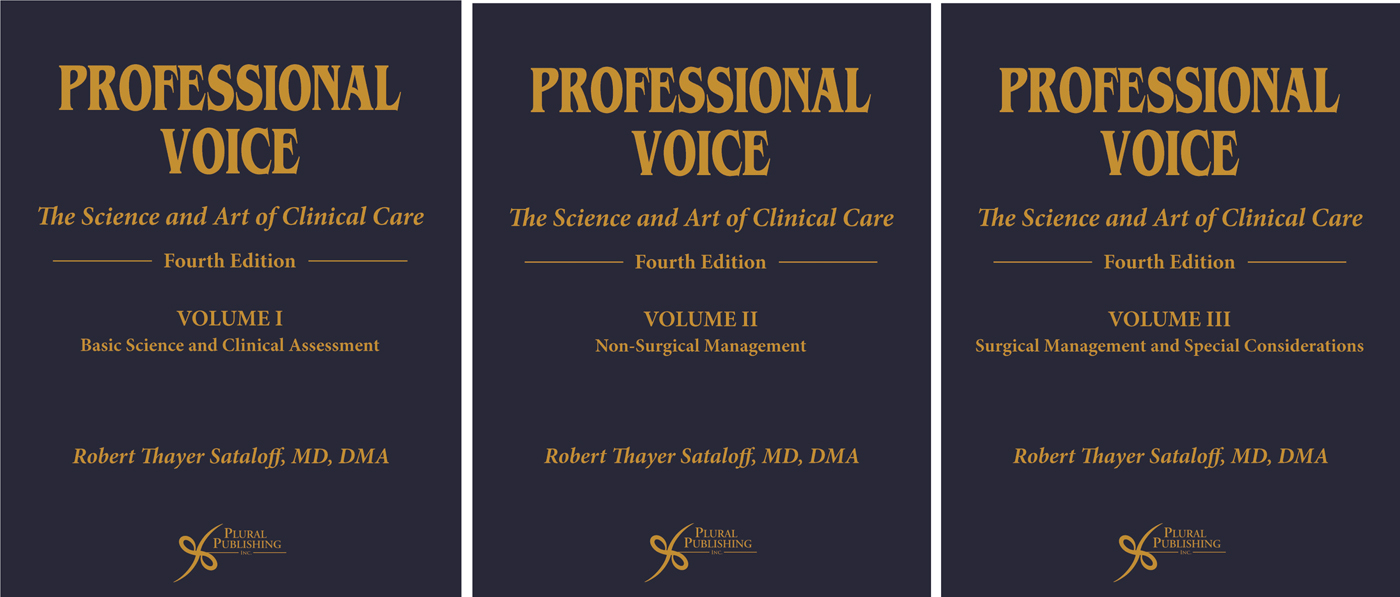Professional Voice: The Science and Art of Clinical Care has been updated, and the fourth edition builds on the success of the previous three. The first edition was published in 1991 and contained 33 chapters. The fourth edition is a massive collection of 120 chapters divided into 9 sections. It is probably the biggest textbook on the subject. Unlike previous editions, this is also available in digital format.
This is a three-volume set. Volume I contains introductory chapters providing perspectives on modern voice medicine and a brief historical overview of its development from the time of Hippocrates. It also covers the basic sciences and clinical assessment of voice in fascinating detail. For those who have never come across chaos theory in the context of voice disorders, Chapters 17 and 18 explain the concepts of fractals and chaos and how they can be applied to voice disorders, both in terms of clinical care, but also applying it to biomedical research.
It was interesting to read Chapter 22 on the clinical voice laboratory; Dr Sataloff et al. describe their clinical facility and their team. This kind of setup and multidisciplinary team would be hard to achieve in the National Health Service, even in the biggest UK centres.
Volume II covers the non-surgical management of voice disorders. It tackles both common and rare conditions that affect voice. The chapters focusing on the effects of auditory systems on phonation and hearing loss in professional voice users are thought-provoking, and address something that is usually underappreciated in clinical practice. There are chapters on paediatric voice disorders, endocrine function and autoimmune conditions, amongst others. The detail in some chapters was superfluous (e.g. assessment and management of thyroid nodules, epistaxis, etc.). There is a whole chapter on pyrotechnics in the entertainment industry and another on how these affect performers’ health. Maybe this is something to be edited in the fifth edition!
The surgical management of voice disorders is covered in Volume III. The content is well supported by high-quality colour photographs and schematic drawings. The description of surgical techniques is comprehensive and easy to follow. In my opinion, the chapter on facial plastics is over-inclusive and much of it is not directly relevant to voice disorders.
The last section of the book deals with special considerations, including medico-legal implications of professional voice care. The legal cases described are from the USA, but there are take-home messages that readers from the rest of the world can learn from.
Dr Sataloff has appended all the relevant patient history questionnaires, objective voice assessment forms and reports, clinic letter templates, and speech and language pathologists’ reports.

This is a complete reference text book that will be very useful to all practising laryngologists, speech and language therapists, trainees, and post-graduate students studying voice disorders. (Sample pages are available at: https://www.pluralpublishing.com/media/media_pv4e_SamplePages.pdf.)


